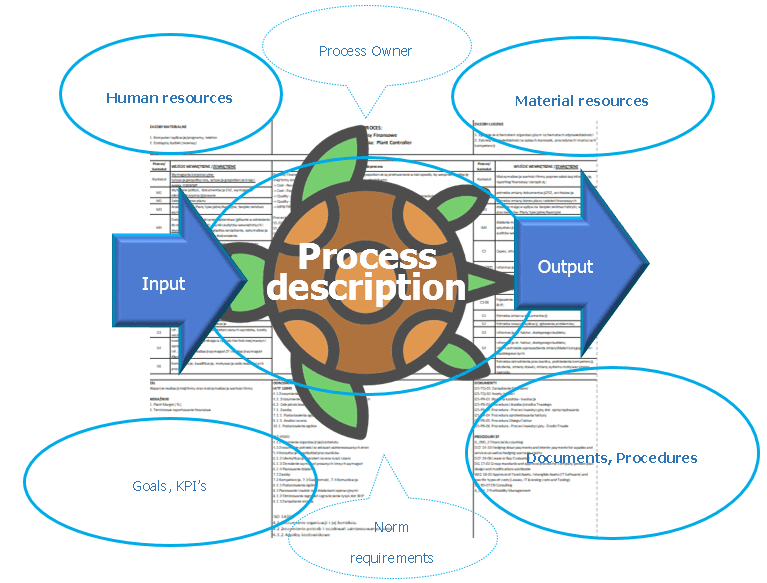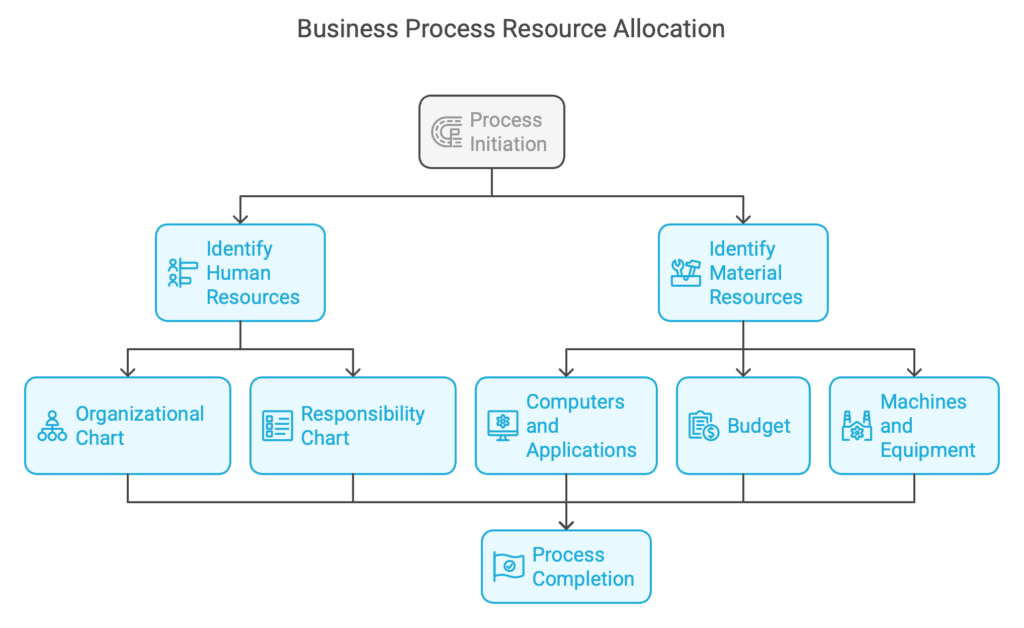One of the basic activities that the Quality Management System involves is appropriately describing the company’s processes.
The Turtle Diagram is a practical tool that allows you to complete this stage of creating a Process Card.
Turtle Diagram – Structure
Thanks to the clear structure of the turtle diagram, we can identify all the essential components of our process. As you can guess, the name comes from a turtle. Its central part, the shell, represents the Process Description.
The remaining parts (legs) include Process Input, Process Output, Human Resources, Material Resources, Goals (indicators), and Procedures with related documents.

Additionally, if the organization in which you work has an appropriate certification system, you can add to the Process Card the applicable points of the ISO or IATF standard.
Process owner – a Key figure
Any Process Card based on a turtle diagram must have an owner. According to the process approach, it is no longer the former “IMS representative” or the current “Coordinator / Representative.” It is worth remembering this when describing the job position for the Operational, Production, Logistics, Maintenance, HR, IT, etc.
It is the owner who will be audited for knowing the Process Card and verifying the risk and opportunity analysis.
Process inputs and outputs
In the process approach, the processes are not separate islands. Almost all of them interact with other processes and all dependencies are most often presented on the Process Map. Each process extracts relevant information from the others.
Consider the example of a Process Card for Customer Quality. In this case, our inputs will be, for example:
- New Launches: providing information regarding the tooling status in the launch phase and managing the implementation of changes in current production at the client and our organization request
- HR: specifying the competences, qualifications, and motivation of people implementing the client’s quality process
- Logistics: providing information about production plans, downtimes, shipments, and orders
The outputs, on the other hand, will affect, among others:
- Process Quality: for example, when introducing corrective and preventive actions in the production process resulting from a received complaint
- Quality Management System: for Customer Specific Requirements that relate to the implementation of production process audits in accordance with IATF 9.2.2.3.
- Supplier Quality: managing information provided to sub-suppliers regarding the quality of delivered components and complaints to the supplier
Turtle Diagram vs. Process description
Thanks to the description of the process, we can present in detail the sources that initiate the process, together with an indication of the tools used. Do not forget to communicate appropriately with the involved departments.

The description should also specify the activities that demonstrate when we consider our process complete.
Human resources and material resources
To implement a given business process, we need two types of resources:
- Human Resources
- Material Resources
The first will usually refer to an organization chart and/or a responsibility chart. Job descriptions, procedures, and competence matrices include the scope of responsibility itself. You can enter a description of human resources in the above form for all Process Cards.
On the other hand, material resources will include:
- Computers and relevant applications/programs, telephone
- Available budget
- Machines, equipment, tools
- Components, semi-finished products
Of course, it all depends on the process in question.
Process implementation purpose
If we work in a corporation, central departments will define the goals (KPI – Key Performance Indicators). In other cases, goals are set internally.
Procedures and documents
In this part of the Process Card, according to the turtle diagram approaches, we include all procedures and documents that refer to our process.
We must remember to identify, in addition to the company (internal) documents, also those defined by the corporation.
Turtle diagram example
To illustrate how you can use the Turtle Diagram, you can download an editable Excel form for your own use for free from the Free Quality Tools page. The described company process relates to the Customer Quality Process.
Document name: Turtle Diagram – Template and Example – Excel form
Turtle diagram – summary
As you can see, defining a Process Card based on a turtle diagram is an activity that forms a logical whole. Special training and competencies are not required apart from the role of the moderator. It is most often implemented by a QMS coordinator/representative.
Of course, in case of any changes, it needs an appropriate update. If such a situation occurs, it is worth emphasizing it during the management review. Thus, it is not a document created only at the beginning of the quality management system (QMS) implementation.
An additional advantage of using it is building awareness among the members of the organization as a process approach strategy.
Dariusz Kowalczyk


